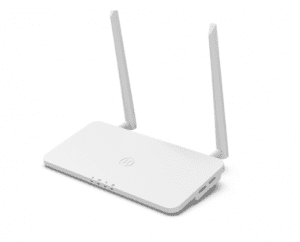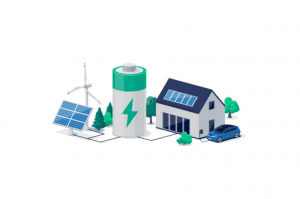The Future of Solar Energy
The question of clean energy is quickly becoming one of the most important conversations of our time. With explosive increases in fuel & gas prices, coupled with ever-growing concerns about the impact of climate change, solar energy systems are emerging as a key solution for both.
In fact, a recent report by Allied Market Research estimates that the global solar market will grow from $52.5 billion in 2018 to $223.3 billion by 2026. That’s an annual CAGR of 20.5%—one of the highest growth rates of any energy sector.
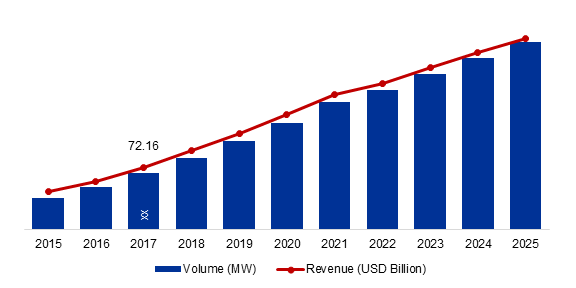
Source: https://www.adroitmarketresearch.com/report-image/solar-1.png
But that’s not to say the future of solar energy doesn’t have its issues. Uptake in certain areas of the world is relatively low, and intense lobbying by traditional energy interests has dampened the worldwide effort to increase their integration in both residential and commercial spaces. How we react to these problems will be essential to determining the speed at which solar can gain global prominence.
In this guide, we’ll discuss the current state of the solar industry globally and in the US, how it compares to other countries around the world, and a few of the possibilities for—as well as key precursors to— the future of solar energy. Let’s get started!
THE CURRENT STATE OF THE SOLAR INDUSTRY IN THE US
At present, the global solar industry is worth over $100 billion, with an expected growth of close to 20% each year. Still, this staggering number represents less than 3% of the world’s energy mix—and it’s not distributed uniformly across the globe’s economy, either.
National disparities
Some countries have a significantly higher percentage of solar energy utilization. For example, in Germany, nearly 9% of the country’s energy comes from solar sources. Compare that to less than 2.8% in the United States, and you’ll see that — proportionally — the US is lagging behind.
This disparity is largely due to two factors: cost and awareness of the benefits.
First, solar energy is still more expensive than traditional forms of energy in many places around the US. This naturally slows uptake; instead of cost-saving assets, solar installations in these areas are seen as ‘luxury’ or ‘high-end’ purchases.
In other cases, people are simply not aware of the potential of solar energy, or how it works. Most people still don’t know about net energy metering, for example (the practice of selling your energy back to the grid during excess production), or that solar panels often add significant value to a person’s home sale price.
As awareness grows, both through targeted awareness campaigns—like what Hoymiles is doing—and through the increasing affordability of solar technology, the 2.8% US solar uptake is poised to rapidly grow.
Solar company stats
Companies exist at all levels of the solar vertical; from upstream raw material producers to system integrators and installers, to downstream distribution and sales companies. At present, there are over 250,000 solar workers contributing to over 13,000 solar companies in the United States.
Generally speaking, the industry is growing incredibly quickly—according to the Department of Energy, jobs in solar grew five times faster than the national average over the last decade. This indicates that there is still ample opportunity for new companies to enter the market and grow quickly since the industry is still in a comparatively early stage of development.
HOW DOES THE US SOLAR SECTOR COMPARE TO GLOBAL INDUSTRIES?
In the backdrop of a rapidly-emerging global solar industry, the US sector is comparatively small. The market size of the US solar sector was $9.1 billion in 2020 and is projected to grow to $14.1 billion by 2028, at a CAGR of 5.6%. In contrast, the global solar market growth rate is expected to grow almost four times faster.
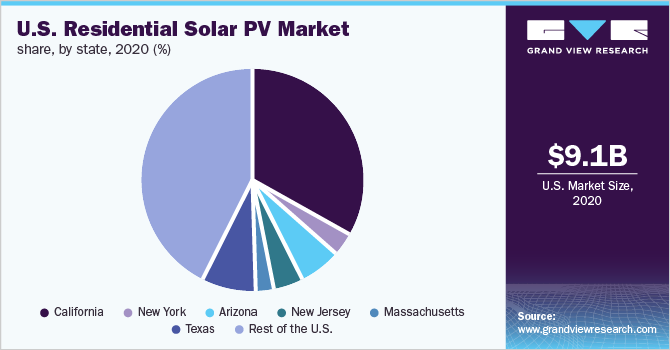
Source: https://www.grandviewresearch.com/static/img/research/us-residential-solar-pv-market.png
The main reasons for this discrepancy are twofold: the solar industry is still in its nascent stages in the US, and solar has faced significant political opposition over the last two decades.
Though the market has been growing rapidly in recent years, political will and economic circumstance has kept it far behind countries like Germany and other EU nations, which have been investing in solar for much longer and feature more favorable solar installation policies.
This naturally represents several opportunities for the US solar industry.
Opportunities
In terms of opportunities, the US has the potential to become a global leader in solar energy because of its strong culture of entrepreneurship, its large economy, and its significant scientific capital.
As an example, many of the technological advances in solar panel technology actually originated in the United States. The US invented silicon solar cells in the 1950s, and America has spent billions of dollars researching and developing ways to economize their usage since then (in some of the most advanced physics and materials laboratories in the world).
Strong entrepreneurial culture also means that effective solar distribution—in terms of both manufacturing and installation—can rapidly be improved as new companies come into and exit from the current market. The US is the seat of global entrepreneurial innovation and disruption, and solar is no exception.
THREE BIG ISSUES HURTING THE FUTURE OF SOLAR ENERGY IN THE US
That said, the US solar industry will also need to overcome significant challenges, like the lack of a strong domestic market, modest opposition to solar energy politically, and the presence of entrenched energy incumbents, in order to reach its full potential.
Being a fiercely democratic and independent country, the US solar industry is subject to the ebbs and flows of public opinion; when the perception of solar shifts, the industry will too.
Relatively expensive cost of solar installations
United States solar installations are expensive (relative to most other areas around the world). For example, when compared to Germany, Americans pay anywhere from 50% to 200% more money to install a PV system.
Why? The main reason for the high cost of solar installations in the US is the comparatively low assistance offered by federal subsidies and incentives. In addition, higher relative advertising costs, lobbying by traditional energy companies (touched on more below), and a lack of awareness about solar among consumers also contribute to bloated prices.
Comparatively poor net metering policies
As mentioned, net metering is a policy that allows consumers to sell excess electricity generated by their solar panels back to the grid. This policy is important because it helps to offset the high cost of solar installations, and is a viable way to turn a liability (your energy needs) into an asset.
However, net metering is still not available in all US states. Where it is available, sale prices are often significantly lower than retail. In addition, the cap on the amount of electricity that can be sold back to the grid is low in many states; at present, each state currently sets its own, but there are (unfortunately) aims to implement strict federal energy buyback rules thanks to legislative bills like H.R. 729.
This means that many homeowners with solar panels are unable to take full advantage of net metering, and therefore cannot reduce their energy costs to a significant degree—naturally making a solar installation less valuable for American homeowners and business owners.
Political opposition
The trifecta of oil, gas, and coal has long held a stronghold over the US energy sector. These industries have been major contributors to the country’s economy and have wielded significant political power in times past.
In the late 20th century, as solar began to emerge as a potential alternative to these traditional sources of energy and climate change was becoming increasingly recognized as a tangible threat, these companies responded with staunch opposition. This took a number of forms, including lobbying against solar subsidies and regulations and spreading misinformation about the cost and feasibility of solar energy.
This force has generally been successful in slowing the future of solar power in the US, leading many to consider it a David vs. Goliath battle. However, the last few years have seen a shift in this dynamic, with solar energy becoming more competitive and cost-effective, and several large energy companies (like BP, Shell, and Chevron) have actually invested a significant portion of their worth into up-and-coming solar technology.
This has led to increased public support for solar energy, as well as a growing movement of businesses and homeowners who are choosing solar not necessarily just for environmental reasons—but for economic ones as well.
WHAT IS THE FUTURE OF SOLAR ENERGY?
At Hoymiles, we believe that solar energy has the potential to power our world in a clean and sustainable way for generations to come. If utilized correctly, the Sun is an abundant and nearly inexhaustible source of electricity, and with the continued advancements in solar technology, we are confident that solar will play a key role in overcoming both climate change and the rising energy costs we’re all familiar with.
That said, there are a number of factors that will undoubtedly influence the future of solar energy. Some of the most important include the following:
How the cost of solar energy changes over time
Solar energy is becoming more and more affordable every day. In fact, a recent study by Our World In Data found that the cost of solar has fallen by over 80% since 2010. Twelve years ago, the cost to generate one-megawatt hour via solar was approximately $378. By 2019, that same energy took just $68—a dramatic decrease in price and availability.
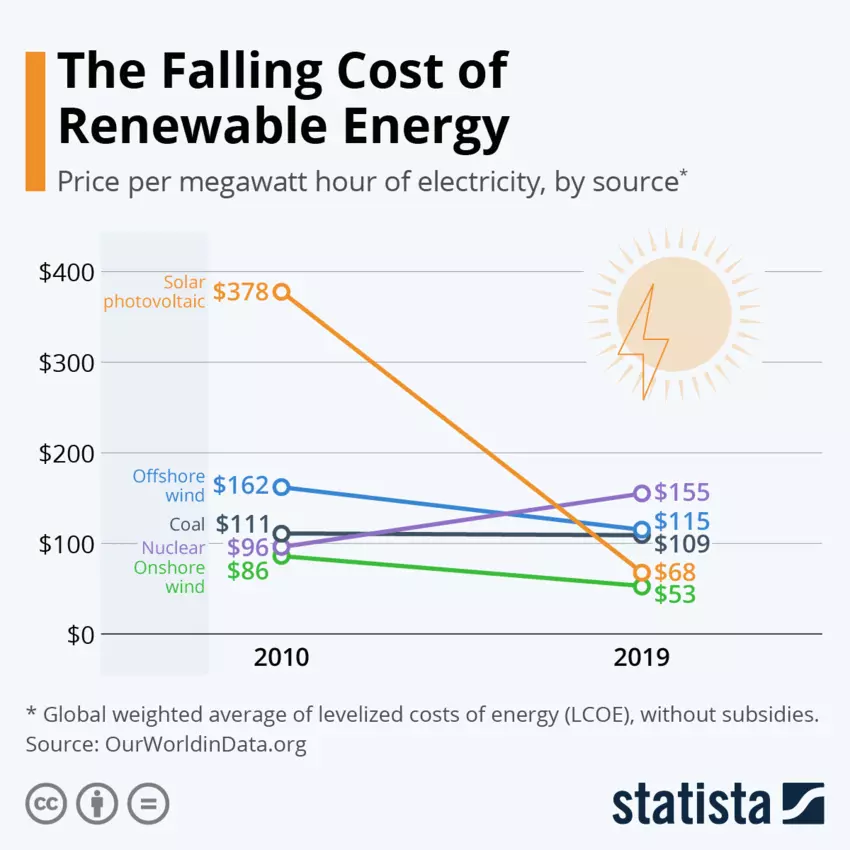
Source: https://www.weforum.org/agenda/2021/11/renewable-energy-cost-fallen/
This decrease is largely due to advancements in technology and the increasing popularity of solar energy in other countries. As solar becomes more widespread, the cost of materials and installation will likely continue to drop, making solar energy an increasingly cost-effective option for consumers and businesses alike.
Solar is already competitive with other forms of energy in many parts of the world. In sunny, coastal areas like California and Hawaii, solar can actually be cheaper than traditional electricity sources. And in countries like India, where solar energy is subsidized by the government (and gas taxes are incredibly high), it’s often the most cost-effective form of energy to begin with.
Rebate and incentive programs
The United States government currently has a number of policies in place to support solar energy. These include tax credits, rebates, and loan programs that make it easier for homeowners and businesses to install solar panels.
Compared to many European countries, though, these are relatively lackluster.
What is the future of solar energy in the US? If citizens can muster the political will necessary to subsidize, economize, and encourage solar adoption across its states, the solar energy share will undoubtedly grow. And as that occurs, it’s likely that US-wide net metering and other policies will emerge to make solar even more accessible.
The growth of distributed devices
The distributed device market (also commonly referred to as the Internet of Things, or IoT) is expected to grow rapidly in the coming years, with over 27 billion devices expected to be connected by 2025. This will create a massive demand for solar energy, as distributed IoT devices will require a reliable and sustainable source of power.
Solar energy systems are the perfect solution for this, as they can be installed virtually anywhere and are highly scalable. In addition, battery-enabled PV systems are consistent and reliable, making them a strong choice for powering devices that need to be always on and always connected. With hundreds of millions of cameras, sensors, and other devices expected to be connected in the coming years, solar energy is thus poised for unprecedented growth.
Projections for the growth of solar energy
The graph below shows projections for the future of solar power in terms of petawatt hours per year (PWh). It is estimated that by 2050, solar will account for roughly 36% of global electricity generation. This, in addition to other forms of renewable energy, like wind and hydro, will help nations reduce their reliance on fossil fuels and transition to a clean energy economy.
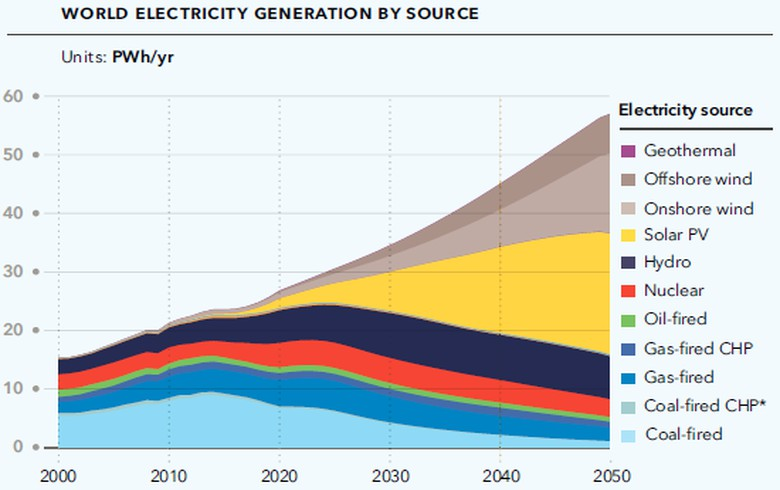
Source: https://renewablesnow.com/news/renewables-produce-85-of-global-power-nearly-50-of-energy-in-2050-582235/
But there are some prerequisites. In particular, technological advances and policy support will be necessary to achieve the projected growth in solar. Though fading, the once-staunch lobby opposition to solar in culturally-dominant countries like the United States will need to be replaced with vocal support if these ambitious growth rates are to be realized around the world.
Additionally, storage technology will have to improve in order to ensure that solar energy can be effectively used when the sun isn’t shining. This is particularly important for large-scale solar installations in non-equatorial regions, which are more likely to require excess energy utilization in the evenings.
What does the future of solar energy look like? That much is up to us—the consumers, the voters, and the legislators. But with solar energy becoming a more cost-effective solution every day, there’s no doubt that it will play a vital role in the years to come.


